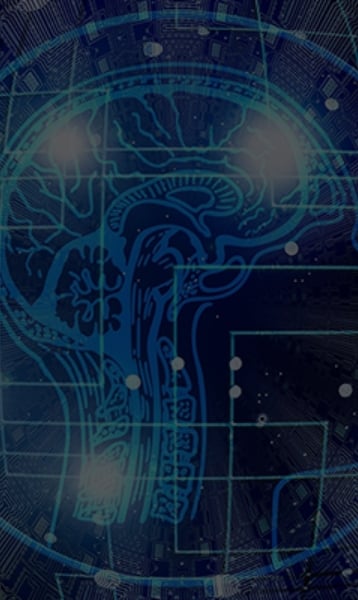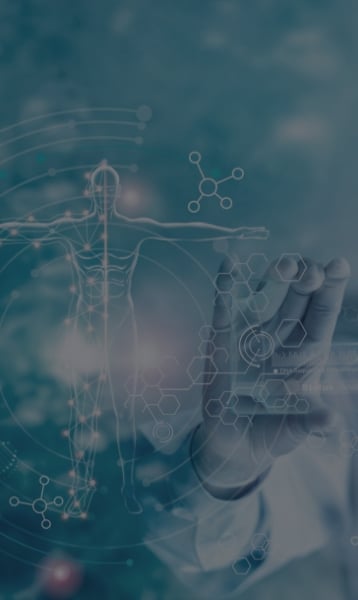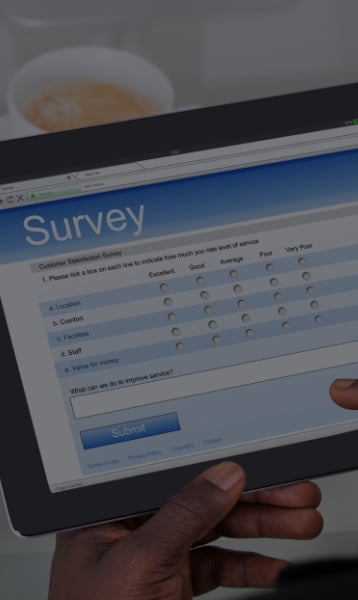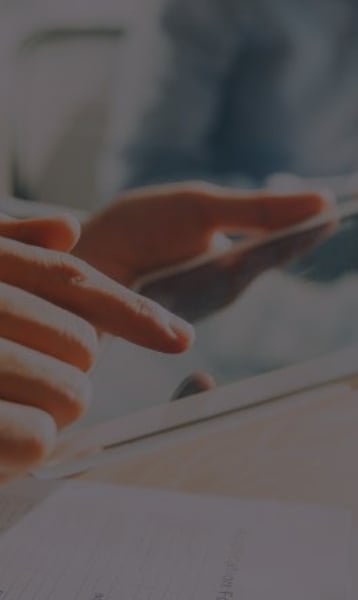This interactive portal improves the analytic experience so you can easily interact with data.
How are you Supporting the Mental Health of Your Employees?

Integrated Benefits Institute
Over the past 18 months, we’ve had our lives altered by the pandemic and as a result, it’s taken a toll on the mental health of many in the US. Mental health has been top of mind for many employers, who must navigate how best to support their staff’s health and wellbeing.
What is the current landscape in the US as far as mental health of our workforce? And how can employers best support their staff? IBI sought to answer these questions during a webinar, Prioritizing Mental Health in the Workplace, on November 4.
“This particular challenge hit my family directly. I have a 18-year-old who a year ago today was sitting in a pediatric emergency room for 4 days…awaiting a psychiatric bed,” shared IBI President Kelly McDevitt. “While I had for 35 years helped large employer’s navigate these issues for their own employees, I had never been faced with it personally. So a year ago, we began our journey through a broken mental health system.”
The mental health landscape
Anxiety and depression symptoms skyrocketed for employed adults during the pandemic, more so than adults in general, according to IBI’s latest analysis. Before the pandemic, 8.7% of employed US adults reported symptoms of anxiety and depression, increasing to 39.5% of adults during the pandemic—a 4-fold increase in reported symptoms, compared to just a 3-fold increase for US adults in general.
Employees with work disruptions-- including those who shifted to telework or went on leave, or those with kids home from school-- are more likely to report symptoms of anxiety and depression.
“Even when your counseling needs are fully met, when you experience work disruptions like switching to telework or having kids home from school, you’re more likely to report anxiety or depression symptoms than without those work disruptions,” said Nicole Nicksic, Ph.D., IBI’s Research Lead.
How can employers help?
In surveying employers, IBI found their biggest challenges to be access to care, employee engagement, stigma reduction and effective communication. “The biggest complaint I heard when I joined Grainger [pre-pandemic] was that parents could not find in-network providers for children who were experiencing [mental health] difficulties,” said Lisa Thompson, Director of Benefits at W.W. Grainger, Inc.
“There was network inefficiency, trying to get people appropriate care within the network…and the affordability issue,” shared Matt Ponicall, Senior Vice President, Benefits Bank of America.
In Lisa’s case, Grainger was able to carve-in mental health as part of their health plan and made significant changes to their Employee Assistance Program (EAP), rebranding it to a stress management program. Prior to the changes, staff reported waiting 4 to 6 weeks for an appointment with a provider. With their new EAP provider, staff are now able to see providers in 24 to 48 hours.
“In 9 months with the previous EAP provider, we had about 1100 access the program. In the first 18 days, we had 500 people access the new provider. I think the rebranding, leadership support, talking about taking care of your emotional health, those things have made this work at Grainger,” Lisa emphasized.
Leadership support was lauded by both Laura and Matt as being critically important. “EAP, people don’t know what it means, so we changed it to confidential counseling,” said Matt. “We had tremendous support from leadership, we had our CHRO lead a courageous conversation on suicide prevention, and it was the second highest rated broadcast behind our CEO’s townhall. We saw our behavioral health utilization skyrocket.”
Measuring success and looking into the future
Both Matt and Lisa agree that it’s difficult to measure success of these new programs. “We’re still working through this, we don’t have an answer,” said Matt. “What does our measurement strategy look like moving forward in the emotional wellbeing space? What’s the next phase of solutions that we think would be really impactful for our population?”
Laura said that in Grainger’s case, the new EAP is still being evaluated. “I really want to test this new vendor to see if they will get our employees better faster, and will they be able to help our leave incidence. We need to study this in 2022 to see if it’s meeting our needs,” she added.
Whether you’re 10,000 or 100 employees, in the end, both Matt and Laura agreed that the following are needed for change:
- Leadership support and discussions to breakdown stigma around mental health
- Make the stories real, employees react to other employees
- Ask your leaders how their workforce is doing and how they’re interacting with current programs
- Work with current health plan partners -- ask vendors to focus on behavioral health; ask how are the clinical teams; how are they integrating behavioral health resources as they manage medical cases?
- Don’t just look at medical claims, look at the leave data too
“Don’t be afraid to talk about mental health. Pretending mental health challenges don’t exist, doesn’t help anyone,” said Lisa.
- February 2025 (1)
- December 2024 (2)
- March 2024 (1)
- January 2024 (1)
- October 2023 (3)
- September 2023 (1)
- July 2023 (1)
- May 2023 (1)
- April 2023 (1)
- February 2023 (1)
- January 2023 (1)
- December 2022 (1)
- November 2022 (1)
- October 2022 (1)
- September 2022 (1)
- August 2022 (2)
- July 2022 (1)
- June 2022 (3)
- May 2022 (2)
- April 2022 (1)
- March 2022 (2)
- February 2022 (1)
- January 2022 (1)
- December 2021 (1)
- November 2021 (1)
- October 2021 (1)
- August 2021 (1)
- July 2021 (2)
- June 2021 (1)
- May 2021 (1)
- April 2021 (1)
- February 2021 (1)
- January 2021 (3)
- August 2020 (1)
- July 2020 (3)
- May 2020 (1)
- April 2020 (4)
- March 2020 (4)
- February 2020 (1)
- January 2020 (1)
- November 2019 (2)
- July 2019 (4)
- June 2019 (3)
- May 2019 (2)
- April 2019 (2)
- March 2019 (3)
- February 2019 (7)
- January 2019 (9)
- November 2018 (6)
- October 2018 (3)
- September 2018 (3)
- August 2018 (2)
- July 2018 (4)
- March 2018 (22)
- February 2018 (1)
- October 2017 (1)
- September 2017 (1)
- August 2017 (1)
- July 2017 (1)
- June 2017 (3)
- May 2017 (2)
- April 2017 (1)
- March 2017 (29)
- February 2017 (1)
- January 2017 (1)
- December 2016 (3)
- November 2016 (2)
- October 2016 (1)
- August 2016 (3)
- May 2016 (2)
- April 2016 (8)
- February 2016 (29)
- January 2016 (1)
- December 2015 (2)
- July 2015 (4)
- June 2015 (6)
- May 2015 (1)
- April 2015 (1)
- March 2015 (22)
- February 2015 (1)
- January 2015 (1)
- December 2014 (1)
- November 2014 (1)
- October 2014 (2)
- September 2014 (1)
- August 2014 (3)
- July 2014 (2)
- June 2014 (1)
- May 2014 (2)
- April 2014 (4)
- March 2014 (8)
- February 2014 (1)
- January 2014 (1)
- December 2013 (2)
- November 2013 (2)
- October 2013 (4)
- August 2013 (1)
- July 2013 (3)
- May 2013 (13)
- March 2013 (2)
- February 2013 (9)
- January 2013 (1)
- December 2012 (1)
- November 2012 (1)
- June 2012 (1)
- May 2012 (1)
- April 2012 (1)
- August 2011 (1)
- June 2011 (3)
- May 2011 (1)
- April 2011 (2)
- March 2011 (1)
- February 2011 (2)
- November 2010 (1)
- October 2010 (1)
- June 2010 (1)
- March 2010 (1)
- January 2010 (2)
- October 2009 (1)
- July 2009 (1)
- May 2009 (2)
- March 2009 (1)
- January 2009 (1)
- November 2008 (1)
- October 2008 (2)
- September 2008 (1)
- August 2008 (1)
- June 2008 (1)
- May 2008 (1)
- April 2008 (2)
- March 2008 (1)
- February 2008 (1)
- January 2008 (2)
- December 2007 (1)
- November 2007 (1)
- October 2007 (1)
- September 2007 (1)
- August 2007 (1)
- July 2007 (1)
- June 2007 (1)
- May 2007 (2)
- March 2007 (1)
- February 2007 (1)
- January 2007 (1)
- August 2006 (1)
- June 2006 (1)
- March 2006 (1)
- May 2005 (1)
- July 2004 (1)
- 2019 (1)
- 2020 (1)
- Absence (2)
- Absence Management (4)
- Article (105)
- Behavioral Health (2)
- Benchmarking (9)
- Benefit Design (11)
- Benefits + Plan Design (26)
- Blog (72)
- Burnout (1)
- Business Performance (2)
- Business Value of Health (21)
- Cancer (3)
- Cardiovascular Disease (4)
- Care Management (1)
- Care Quality (1)
- Caregiving (3)
- Case Studies (7)
- Chronic Conditions (2)
- Communicating H&P to Business Leaders (1)
- Community Health (2)
- Comparative Effectiveness Research (1)
- Connecting HR to Operations (1)
- COVID-19 (13)
- Culture of Health (1)
- Culture of Health + Safety (29)
- Data (1)
- Data Driven Decision Making (1)
- Depression (5)
- Diabetes (5)
- Disability Leave (41)
- Disease Burden (1)
- Employer Perspectives (5)
- Engage Employees (45)
- Event Recap (2)
- Exchanges (4)
- Family + Parental Leave (8)
- FMLA (2)
- Headache (1)
- Health + Productivity Management (54)
- Health Inequities (1)
- Healthcare (2)
- Healthcare Costs (17)
- HPM Survey (3)
- IBI Agenda (2)
- IBI Presents (9)
- immunization (1)
- Industry Profile (1)
- Integrating Health Data (12)
- Invest In Health (52)
- Leave Benchmark Survey (1)
- Linking Health to Business Performance (1)
- Make The Business Case (54)
- Manage Absence (70)
- Market Perspectives (29)
- Maternity (1)
- Measurement (2)
- Measuring Outcomes (21)
- Medication Adherence (1)
- Mental + Emotional Health (16)
- Mental Health (7)
- Migraine (2)
- MSD (1)
- MSK (1)
- Multi-Study Spotlight (23)
- Musc (1)
- Musculoskeletal Disorders (12)
- National Forum (1)
- Obesity (2)
- Occupation (1)
- Online Events (17)
- Pain Management (1)
- Patient Resources (1)
- Patient-Centered (2)
- Pharmacy (5)
- Physical Activity (1)
- Popular and Timely (11)
- Practical Guidance (6)
- Pregnancy (1)
- Presenteeism (1)
- Presenteeism / Job Performance (3)
- Preventive Care (1)
- Previous Forums (109)
- Productivity (46)
- Provider Quality (1)
- Regional Events (1)
- Research (22)
- Research Based Healthcare Evidence (1)
- Research Report (2)
- Research Review (3)
- Return to Work (19)
- Risk Management (11)
- SAW / RTW (1)
- Scholarly Work (2)
- Short-Term Disability (2)
- Sick Leave (15)
- Social Determinants of Health (1)
- Stay at Work (1)
- Stay-at-work / Return-to-work (1)
- STD (2)
- Strategies (1)
- Stress (2)
- Suicide (2)
- Surveys (3)
- Talking to Leadership (4)
- Telehealth (3)
- Understand Health Risks (34)
- Value-based Benefit Design (1)
- Vendor Integration (1)
- Video (3)
- virtual care (1)
- virtual health (1)
- Weight Control (5)
- Well-being (16)
- Wellness + Lifestyle (17)
- Working Remotely (4)
- Workplace Culture of Health (2)
- Workplace Health Programs (1)
- Admin
- Brian Gifford
- Brian Gifford Ph.D. Director, Research and Analytics, IBI
- Candace Nelson
- Carole Bonner
- Carolyn Ho
- Carolyn Ho, IBI Communications Lead
- Erin Peterson
- Erin Peterson, Researcher
- Gia Harris
- IBI
- IBI Member
- IBI Research Team
- Integrated Benefits Institute
- Jennifer Santisi
- Jim Huffman
- Kelly McDevitt, IBI President
- Marshall Riddle
- Nicole Nicksic, PhD, MPH Research Lead
- Sera-Leigh Ghouralal
- Thomas Parry, PhD Senior Advisor, Integrated Benefits Institute




















.jpg?width=500&name=pexels-antoni-shkraba-6749742(1).jpg)


.jpg?width=500&name=Untitled%20design%20(1).jpg)


.png?width=900&name=Copy%20of%202024%20Research%20Priorities%20Banner(5).png)

